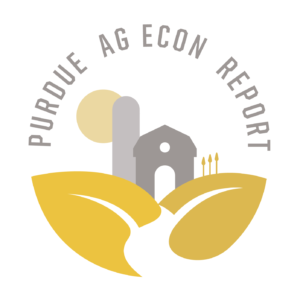Cash Rents Continue to Adjust Downward
December 13, 2015
PAER-2015-22
Craig Dobbins, Professor of Agricultural Economics
What about cash rents? The Purdue Farmland Value and Cash Rent Survey reported a statewide decline in cash rents for the 2015 crop. This was the first statewide decline in our survey since 1987. In addition to the tight margins faced by farmers in 2015, the wet Indiana spring and summer weather in many areas of the state took its toll in the form of lower yields. While some of the yield loss will be offset by crop insurance indemnities, these localized yield losses did not raise fall prices, and thus the crop insurance revenue floor was not nearly as strong as the 2012 Midwest drought. Even with normal yields, 2015 margins were very tight, or even negative. Those who suffered low yields are generally facing an even more negative financial situation.
While fertilizer and fuel prices have declined from 2015 levels, inputs such as seeds and chemicals have remained steady. The Purdue 2016 Crop Cost and Return Guide indicates per acre direct costs for 2016 corn and soybean production will be a little less than 2015. These small reductions in direct costs, while helping to lower production costs are only a small fraction of the decline that has occurred in revenues.
It is also important to consider the implications of overhead costs. In the short-run, overhead costs are not tied to production levels. If production levels can be increased, this lowers per unit costs. A common strategy used for lowering overhead costs per unit is to spread fixed machinery and labor resources over more acres and thus more bushels of production. The desire of farms to expand farm size by renting more land is one reason that the farmland rental market continues to be very competitive. It also makes farmers reluctant to give up leased farmland even when the current level of cash rent results in a loss.
Given expected low commodity prices next fall and the adverse weather events of 2015, the need to lower per bushel production costs in many regions of Indiana in 2016 is even greater than last year. In addition, grain futures markets are suggesting weak crop prices for multiple years. Given these commodity price expectations, it seems clear that there will not be sufficient revenue to sustain the high per unit cost of production that developed during the 2006 – 2013 period. Downward adjusts in input costs and cash rents occur slowly, but over time these adjustments do occur. Statewide, I expect 2016 cash rents to decline 4% to 8%.
